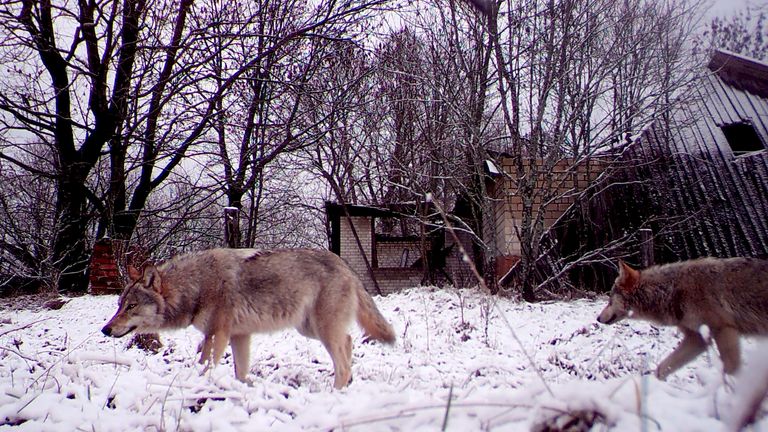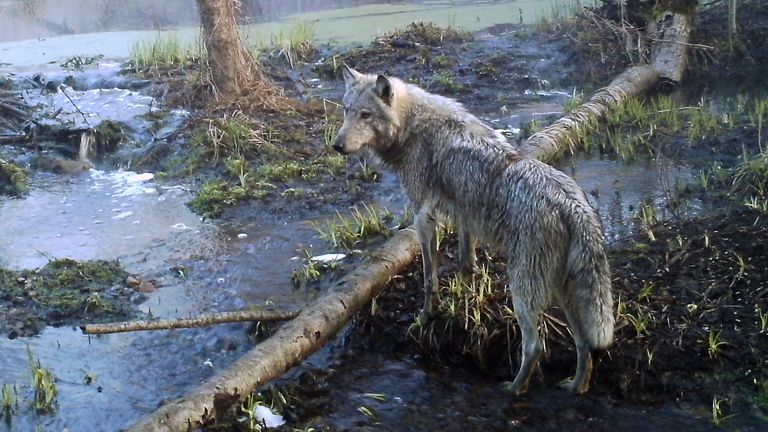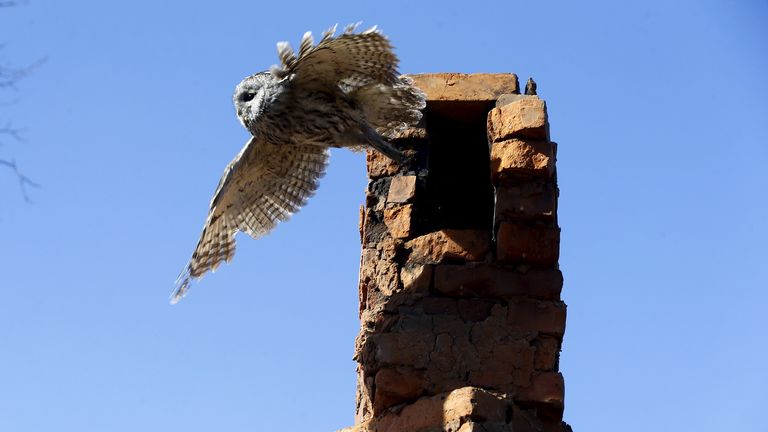The Mechanic
Jedi Council Member
Chernobyl's mutant wolves appear to have developed resistance to cancer, study finds
The wolves are exposed to cancer-causing radiation as they roam the wastelands of the abandoned city - with researchers finding part of their genetic information seems resilient to increased risk of the disease.
Tom Gillespie
News reporter @TomGillespie1
Sunday 11 February 2024 09:42, UK

Image: Wolves walk in the Chernobyl exclusion zone. Pic: Reuters
Mutant wolves roaming the deserted streets of Chernobyl appear to have developed resistance to cancer - raising hopes the findings can help scientists fight the disease in humans.
A nuclear reactor exploded at the Chernobyl power plant in Ukraine in 1986 - with more than 100,000 people evacuated from the city as the blast released cancer-causing radiation.
The area has remained eerily abandoned ever since, with the Chernobyl Exclusion Zone (CEZ) put in place to prevent people from entering a 1,000-square-mile area where the radiation still poses a cancer risk.
Humans may not have returned, but wildlife such as wolves and horses roam the wastelands of the evacuated city more than 35 years after the disaster.
Dr Cara Love, an evolutionary biologist and ecotoxicologist at Princeton University in the US, has been studying how the Chernobyl wolves survive despite generations of exposure to radioactive particles.
Dr Love and a team of researchers visited the CEZ in 2014 and put radio collars on the wolves so that their movements could be monitored.
She said the collars give the team "real-time measurements of where [the wolves] are and how much [radiation] they are exposed to".
They also took blood samples to understand how the wolves' bodies respond to cancer-causing radiation.

Image: A wolf in the woods in Chernobyl. Pic: AP
The researchers discovered that Chernobyl wolves are exposed to upwards of 11.28 millirem of radiation every day for their entire lives - which is more than six times the legal safety limit for a human.
Dr Love found the wolves have altered immune systems similar to cancer patients undergoing radiation treatment, but more significantly she also identified specific parts of the animals' genetic information that seemed resilient to increased cancer risk.
A lot of research in humans has found mutations that increase cancer risk - with the presence of the variant BRCA gene making it more likely a woman might develop breast or ovarian cancer, for example.
But Dr Love's work has sought to identify protective mutations that increase the odds of surviving cancer.

Image: A tawny owl in the Chernobyl Exclusion Zone. Pic: Reuters
The pandemic and Russia's invasion of Ukraine have prevented Dr Love and her collaborators from returning to the CEZ in recent years.
She said: "Our priority is for people and collaborators there to be as safe as possible."
Dr Love presented her findings at the annual meeting of the Society of Integrative and Comparative Biology in Seattle, Washington, last month.
Source: Chernobyl's mutant wolves appear to have developed resistance to cancer, study finds
